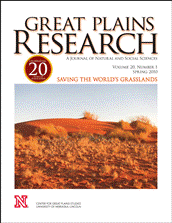Center for Great Plains Studies

Great Plains Research: A Journal of Natural and Social Sciences (through 2013)
ORCID IDs
Date of this Version
Fall 2004
Document Type
Article
Citation
Great Plains Research 14 (Fall 2004):231-51
Abstract
Intensive, in-depth interviews were conducted with 45 non-Hispanic white residents of three rural Nebraska meatpacking communities. The purpose of the investigation was to document (I) perceptions of community change; (2) community-wide benefits of a new Latino population; and (3) strategies for strengthening multi-ethnic rural communities. Data were analyzed using Thematic Analyses (Aronson 1994). Application of the findings, for strengthening rural communities, is discussed.
The composition of rural populations is changing at a remarkable rate largely due to immigration (movement into a country in which one is not a native) and migration (movement within a country). The population growth of US Hispanics in the Midwest and Great Plains was dramatic during the 1990s. The Hispanic population in Nebraska, for example, increased by 165% between 1990 and 2000, minimizing the loss of the state's population over the last decade. Such significant population shifts can transform the dynamics of communities. A question that many ask, however, is what contributes to these dramatic demographic shifts in areas of our nation that were previously underrepresented by US Hispanics? The simple answer to this question is: industry and employment. Meatpacking, for example, requires little training or English-language skills, and has been found to be a primary magnet attracting immigrants to the midwestern states (Dalla and Baugher 2001). Moreover, packing plants offer year-round labor; immigrants entering rural midwestern communities are beginning to stay (Skaggs 1986; Broadway 2000). Such sweeping demographic changes raise a host of questions for educators, mental-health workers, government, and businesses alike, with respect to the challenges and opportunities these changes present. This investigation was intended to examine long-term, non-Hispanic white residents' perceptions of community change, given large-scale influx of immigrant laborers to the meatpacking industry. A second goal was to examine residents' perceptions of the benefits and challenges of sweeping demographic and community changes. Finally, effective strategies for responding to rapid demographic change resulting in multicultural communities were sought.
Included in
Demography, Population, and Ecology Commons, Other International and Area Studies Commons, Race and Ethnicity Commons, Regional Sociology Commons


Comments
Published in Great Plains Research Vol. 14, No. 2, 2004. Copyright © 2004 The Center for Great Plains Studies, University of Nebraska–Lincoln. Used by permission.